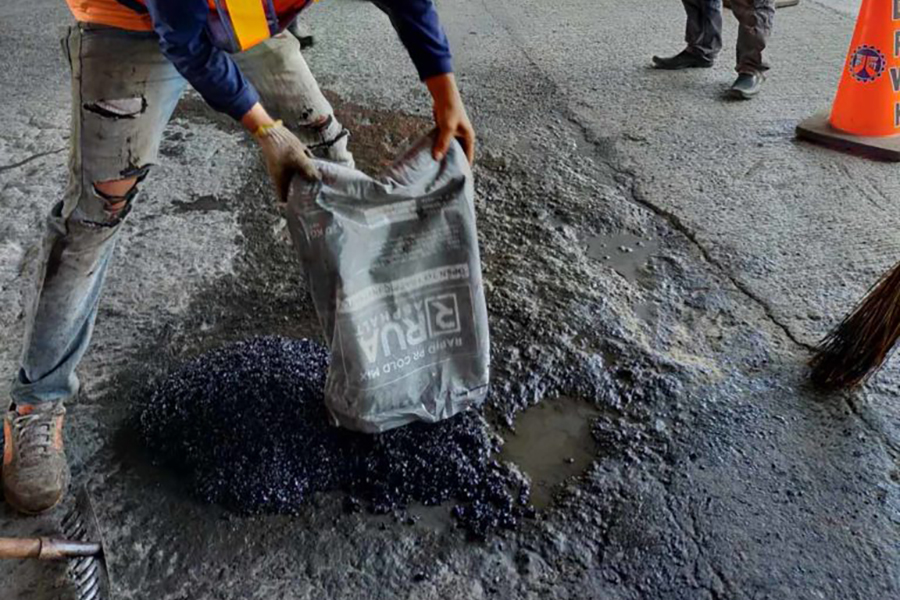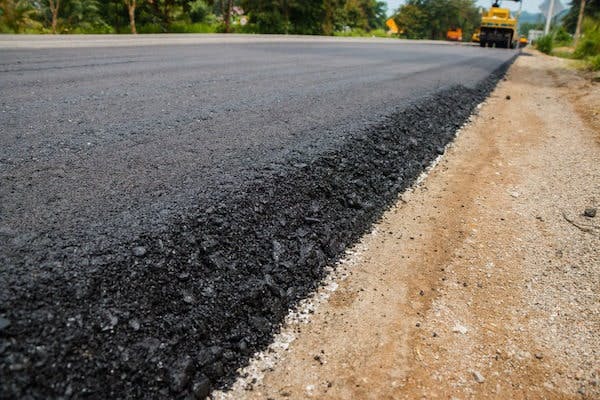Opening the Tricks of Warm Mix Asphalt Technology
Discovering the depths of hot mix asphalt innovation reveals a globe where accurate formulations and precise processes assemble to form our roadways and facilities. The blend of fillers, aggregates, and binders isn't just a building and construction task yet a critical orchestration of toughness and effectiveness.
Value of Hot Mix Asphalt
Hot Mix Asphalt plays a vital function in modern-day facilities development due to its toughness and cost-effectiveness. As the most generally used paving product for roadways, highways, and car parking whole lots, Warm Mix Asphalt supplies a range of benefits that add to its relevance in building jobs.
The sturdiness of Hot Mix Asphalt stems from its composition, which includes accumulations, binder, and filler materials that are carefully picked and blended to satisfy particular efficiency demands. Overall, the value of Hot Mix Asphalt in framework development can not be underrated, as it continues to be a keystone of contemporary building methods.
Parts of Asphalt Mixes
The make-up of asphalt blends is composed of meticulously selected aggregates, binder, and filler products that are crucial for attaining specific performance needs. Accumulations are the key part of asphalt blends, supplying stamina and stability. The binder, usually asphalt or asphalt cement, holds the accumulations together and gives adaptability and longevity to the mix.
The combination and proportion of these components play a significant duty in establishing the quality and efficiency of the asphalt mix. Engineers meticulously create the mix to satisfy certain requirements, considering variables like traffic volume, climate conditions, and pavement life expectancy. Correct option and balancing of aggregates, binder, and fillers are essential for producing resilient, long-lasting asphalt sidewalks.
Combining and Manufacturing Techniques

When the accumulations are selected, the binder, often asphalt cement, is added to bind the materials together. The binder's top quality and quantity substantially impact the mix's resistance, toughness, and adaptability to ecological factors. Furthermore, fillers like hydrated lime or Rose city cement may be included to improve particular attributes of the asphalt mix, such as its workability or dampness resistance.
During production, the accumulations and binder are warmed, generally in between 250-325 ° F(121-163 ° C ), to facilitate blending and ensure correct coating of the accumulations. The blending procedure must be detailed to accomplish a homogeneous mix that advertises the wanted performance characteristics of the asphalt. Various techniques, such as set blending or drum mixing, are employed to attain high-grade and constant asphalt blends for construction tasks.
Factors Impacting Asphalt Efficiency
Variables affecting asphalt performance encompass a range of variables that affect the sturdiness, durability, and general high quality of asphalt pavements. One crucial aspect is the quality of materials used in the asphalt mix. The type and resource of accumulations, the binder high quality, and the ingredients all play a substantial role in identifying the performance of the asphalt sidewalk. The gradation of accumulations is essential as it influences the mix's workability, stability, and resistance to rutting and breaking.

Design considerations, such as pavement thickness and drain, are important in guaranteeing the long-lasting efficiency of the asphalt sidewalk. By thoroughly taking into consideration these professionals, engineers and factors can maximize asphalt efficiency and enhance the solution life of pavements.
Sustainable Practices in Asphalt Innovation

In addition, the development of warm-mix asphalt (WMA) innovations has actually acquired grip in current years. WMA permits the manufacturing and positioning of asphalt blends at reduced temperature levels contrasted to typical hot-mix asphalt, causing reduced energy consumption and greenhouse gas exhausts. The usage of porous asphalt mixes can aid minimize stormwater drainage problems by allowing water to penetrate through the pavement and right into the ground, advertising all-natural water filtering and reenergize processes. By implementing these lasting practices, the asphalt market can contribute to developing a more eco-friendly and durable facilities network.
Verdict
To conclude, warm mix asphalt modern technology plays an essential function in contemporary facilities advancement because of its longevity and cost-effectiveness. By carefully balancing components, employing proper mixing techniques, and thinking about different elements, engineers can create top quality asphalt mixes that endure rush hour loads and rough climate problems. Welcoming lasting methods, such as utilizing see warm-mix technologies and recycled products, better boosts the ecological friendliness of asphalt technology.
Blending and production techniques in warm mix asphalt innovation include the specific combination and handling of accumulations, binder, and fillers to create a durable and high-performance asphalt mix.Variables affecting asphalt performance encompass an array of variables that influence the longevity, durability, and general quality of asphalt pavements. Sustainable techniques in asphalt modern technology incorporate various efforts intended at lowering the environmental influence of asphalt production and paving processes. By incorporating reclaimed asphalt sidewalk (RAP) and recycled asphalt roof shingles (RAS) right into new asphalt mixes, the sector can significantly lower the intake of raw materials and energy, while also decreasing land fill waste.
WMA permits for the manufacturing and positioning of asphalt blends at reduced temperature levels compared to typical hot-mix asphalt, resulting in lowered power usage and greenhouse gas exhausts.